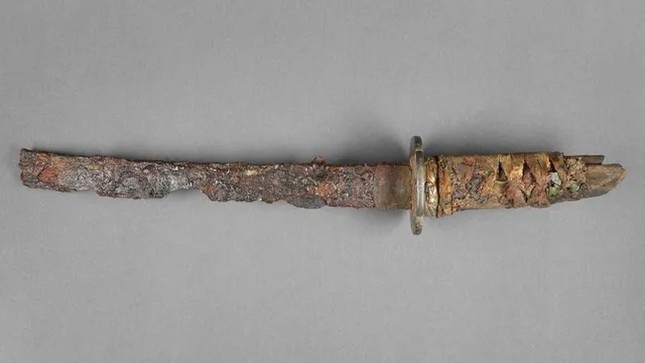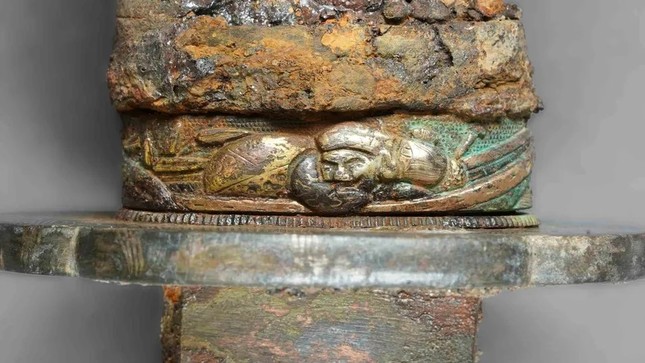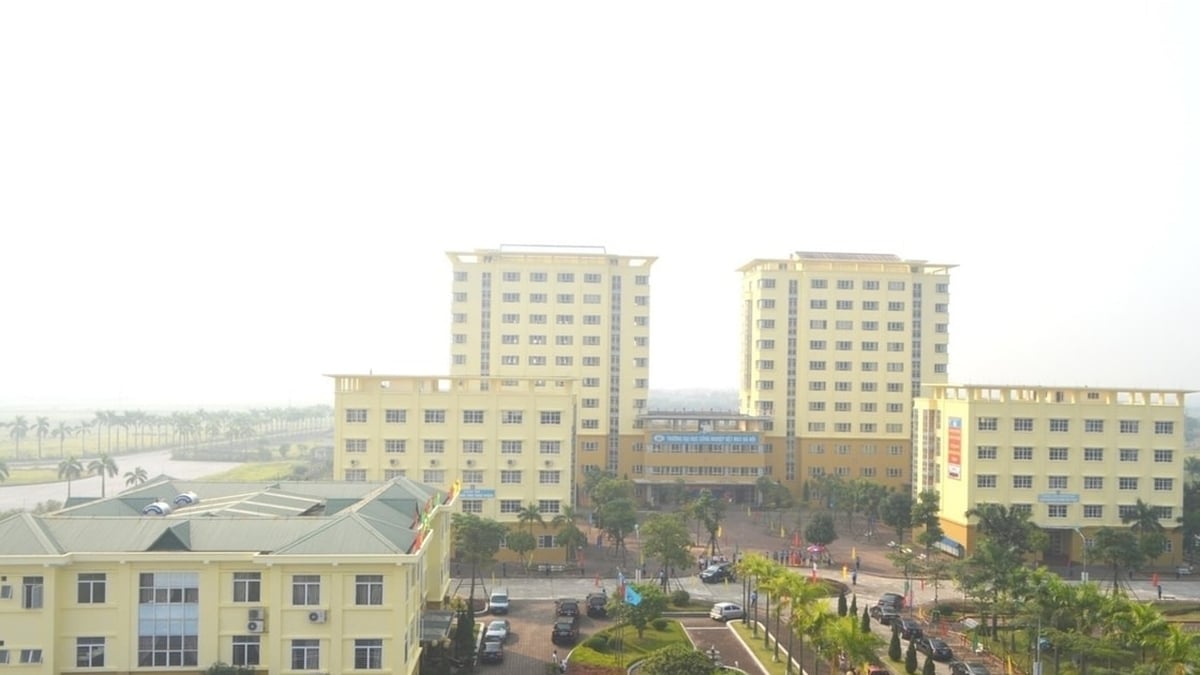TPO - Archaeologists in Germany have unearthed a rare 17th-century Japanese samurai sword in the ruins of a destroyed bunker in Germany during World War II.
IDEA
 |
The Wakizashi sword after being restored. (Photo: © Staachliche Museen zu Berlin, Museum for World and World Heritage) |
The team discovered the badly corroded short sword, known as a wakizashi, while excavating Molkenmarkt, Berlin's oldest square. Initially, archaeologists thought the weapon was a military marching sword, but further analysis revealed that the sword actually dates from Japan's Edo period (1603 to 1868). The blade could be even older, possibly dating back to the 16th century, according to a translated statement from the Berlin State Museum's Museum of Prehistory and Early History. Archaeologists said it may have been brought to Germany in the 1800s on a diplomatic mission.
 |
Close-up of Daikoku, one of the seven Japanese gods of fortune, carrying a hammer (right) and a sack of rice (left). (Photo: © Staachliche Museen zu Berlin, Museum für Vor- und Frühgeschichte / Anica Kelp) |
"Who would have thought that at a time when Japan was isolated and there were hardly any European visitors to the country, such a long-used and richly decorated weapon would be found in Berlin?" said Matthias Wemhoff, Berlin archaeologist and director of the Museum of Prehistory and Early History.
Archaeologists from the Berlin State Monuments Office found the sword in the winter of 2022 while excavating the basements of residential and commercial buildings on Molkenmarkt, which were razed to the ground during World War II and replaced by streets and crossroads in the 1960s. The basements were previously filled with war-related artifacts, including reins, stirrups, curbs and reins that were discarded at the end of the war, according to the statement. But the discovery of the Japanese sword in one of the basements was unexpected.
Now, restoration work has revealed that the weapon is a piece of wakizashi, a sword that was once reserved for dignitaries as a weapon of social status, Wemhoff said. Historically, wakizashi were carried by samurai as a backup weapon, in case they needed to fight in a small room or close to their target, where it would be difficult to draw a longer sword called a katana. They were also known as “companion swords” and were worn at all times by members of the samurai class, according to the British Museum.
The newly discovered wooden hilt was damaged by heat, but the wood fragments and cloth covering the sword were preserved, the statement said. Further restoration revealed a 1-centimeter-wide metal ring or ring at the base of the hilt near the blade, depicting Daikoku, one of the seven gods of fortune in Japan, identified by his hammer and rice sack.
The team also found damaged chrysanthemum-painted decorations and watermarks on the hilt. The sword's design suggests it dates from the Edo period.
Because the hilt is not original, the blade could be even older than the Edo period, possibly dating from the 1500s, museum officials wrote.
It is not known how the sword got to Berlin, but Wemhoff had a few ideas:
"Perhaps the sword was a gift from the Takenouchi Mission of 1862 or the Iwakura Mission, which took place eleven years later, from Japanese ambassadors who visited Europe and the rest of the Western world to build relationships and make an impression," he said. "The spatial proximity of the Molkenmarkt to the surrounding aristocratic palaces of the Berlin Palace suggests this."
German ruler Wilhelm I met the Japanese delegation of the Takenouchi Mission at the palace when he was emperor. In 1873, when he ascended the throne, Wilhelm I received the delegation of the Iwakura Mission. However, it is unknown how the people who threw the sword away at Molkenmarkt during World War II came to possess it.
According to Live Science
Source: https://tienphong.vn/khai-quat-duoc-thanh-kiem-long-lay-tu-thoi-edo-nhat-ban-post1668542.tpo







































































































Comment (0)